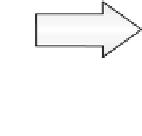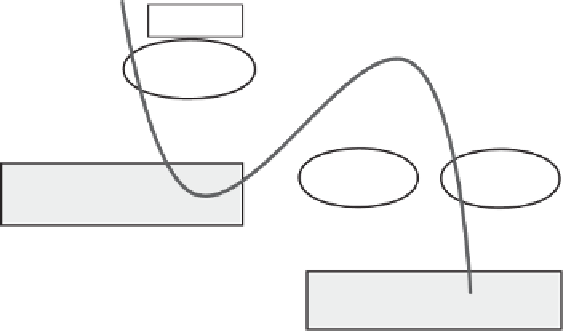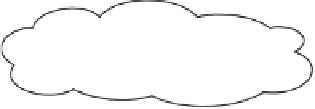Database Reference
In-Depth Information
FF(CCTRY = :CCTRY)
= 10%
STAR
T
100 KT
P,C
CNO
CCTRY
2 MT
100 KT
P
F,C
INO
CNO
CUST
1,000,000 rows
2 MT
INVOICE
20 invoices
per average customer
20,000,000 rows
Figure 8.4
Program A with current indexes.
Index CCTRY
TR = 1
TS = 10%
×
1,000,000
Table CUST
TR = 100,000
TS = 0
Fetch 10%
×
1,000,000 = 100,000
×
0.1 ms
LRT
TR = 100,001 TS = 100,000
100,001
×
10 ms 100,000
×
0.01 ms
1000s+1s+10s=1000 s
According to the QUBE, this step contributes 1000 s to the response time!
The large number of TRs for the customer table occurs because the index CCTRY
is
not
the clustering index.
So much for using the “obvious” access path. With a filter factor of 10%,
100,000 TRs (17 min) is clearly not an option. Even a filter factor of 1% would
require 10,000 TRs (1.7 min). The alternative, a full table scan, would only take
1
×
10 ms
+
1m
×
0
.
01 ms
=
10 s
A filter factor of 0.1% with the index scan would require 1000 TRs, tak-
ing the same length of time as the table scan. This is, of course, because one
TR, according to the QUBE, takes 1000 times longer than one TS. A full table
scan is faster than a nonfat, nonclustered index scan for filter factors greater
than 0.1%. We must be very careful, however, when making sweeping state-
ments such as this, based solely on figures produced by the QUBE. It should
also be understood that the CPU time used would be very much greater with the
table scan. Nevertheless, it should be appreciated that
very low filter factors are
required these days for nonfat, nonclustered index scans to be preferred to table
scans
.




































































Search WWH ::

Custom Search